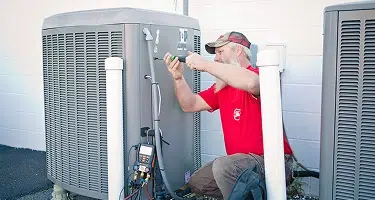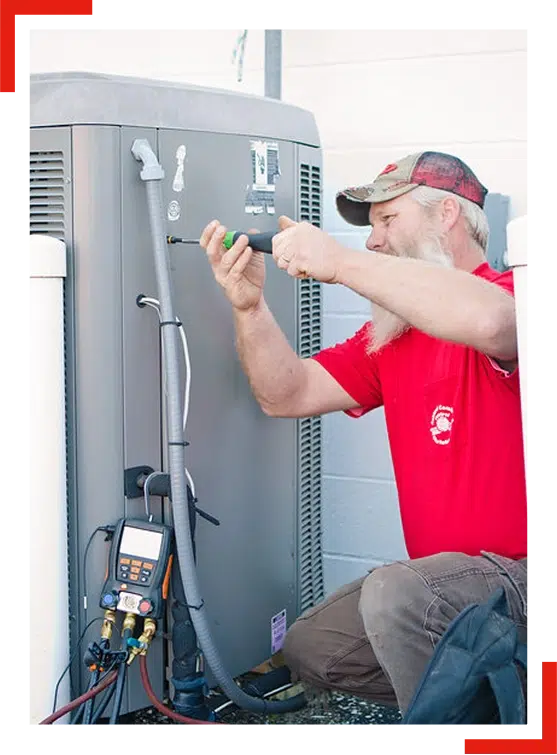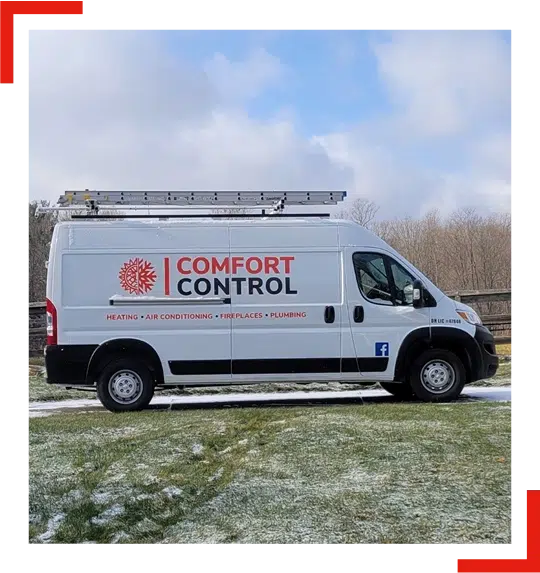
Cold weather is a reality in our beautiful state of Ohio. You probably use your heater for nine months out of the year. Your A/C? Only three. So it only makes sense to consider spending more on heating efficiency upgrades when weighing your options. Here are the most important factors to keep in mind when it’s time to make your selection.
Brand
Investing in a high-quality furnace up front is not only one of the best ways to control your heating costs, but premature repair or replacement costs as well. At Comfort Control, we primarily sell two brands of gas furnaces: Lennox and Amana. Both of these names are premium brands that provide the best in technology along with the reliability and warranty you should expect from a top-notch residential furnace.
Looking to compare the two brands and more? This chart by Modernize Home Services could help you understand key differences.
Installation
Like cars and appliances, furnaces contain more technology than ever these days. However, they still rely on combustible gas as their fuel source, making it extremely important that the installing contractor you choose is qualified for the job. This includes pulling necessary permits, having the proper licensure and insurance, receiving adequate factory training, having the proper tools to set the equipment up, and other qualifications that indicate a safe and professional installation. Getting your furnace installed correctly at the outset will help ensure greater efficiency in how it runs for years down the road.
Remember, when you hire the right installation company, “they will determine exactly what your house needs to get the results you want and will present you with options to achieve your goals. They will also teach you about your home’s new heating system and make sure you have a thorough understanding of how your system will operate.”
Condensing vs. Non-Condensing
It makes a difference! A non-condensing furnace is most easily identified as a furnace with a metal flue pipe that gets hot when the unit runs. Non-condensing furnaces top out at an efficiency near 80%, which means 20% of the heat and energy you’re paying for is leaving the house through the flue pipes and not through the ductwork and registers. Non-condensing furnaces were most common until the mid-1990s, and are sometimes the only option for replacement depending on the type of home and/or the location where the existing furnace was installed.
A condensing furnace is most easily identified as a furnace with plastic or PVC flue pipes. Condensing furnaces have a secondary heat exchanger that helps pull additional heat from the flue gasses before being exhausted. This feature results in cooler flue gases, with efficiencies ranging from 90% to 99%! Condensing furnaces, which require an operable floor drain, are now required in new construction and must be rated at an efficiency greater than 95% to be considered ENERGY STAR.
Fuel Types and Furnace Stages
In addition to non-condensing and condensing furnaces, there are a variety of types determined by the fuel they use (such as propane or natural gas) and stages. A furnace’s stage refers to the force and speed with which it runs. Some furnaces run at full force the minute you turn them on, while others operate at two different speeds. A modulating furnace runs like cruise control, providing just the amount of gas necessary to heat the house. While a modulating furnace costs a bit more upfront, it provides optimal comfort levels in the home and maximum efficiency.
Types of Blowers
A constant torque blower provides a steady amount of air through your home’s registers during each mode of operation. There is some adjustability in this speed during initial installation, but once the blower is set up, it provides constant flow through the system whenever it is running.
A variable-speed blower, on the other hand, is set up to provide varying amounts of air depending on the conditions in the home. A variable-speed blower will ramp up and down to optimize comfort and efficiency. A variable-speed blower costs more than a constant torque blower initially but improves the efficiency of heating your home.
With your heat on for close to three quarters of the year, it’s important that you choose a level of cost, comfort, and overall efficiency that you and your family are happy with. Our professionals at Comfort Control can help you find your best heating solution. Contact us today to get started.



